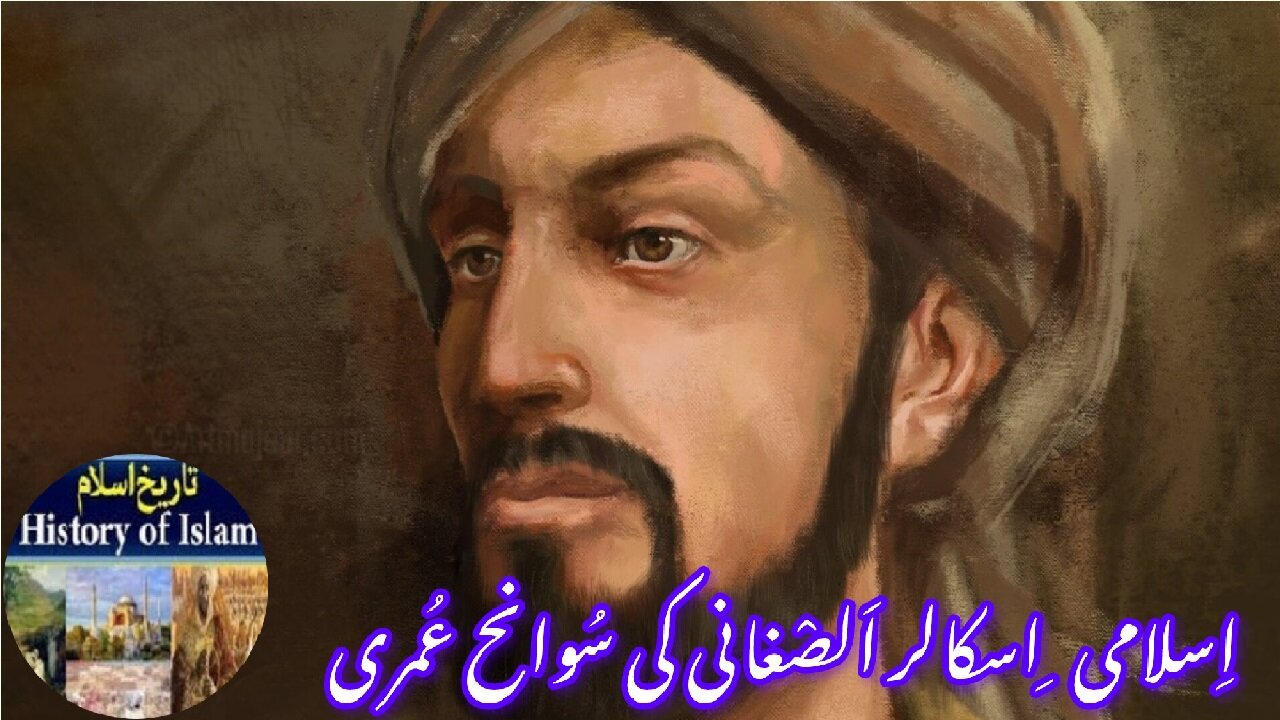Premium Only Content

Biography of Islamic Scholar Al-Saghani اسلامی اسکالر الصغانی کی سوانح حیات
@islamichistory813 #sldaghani #biography #islamichistory #islamicscholars #islam
Biography of Islamic Scholar Al-Saghani.
Assalamu Alaikum, sisters, brothers, friends and elders, we welcome you to a series of videos on Muslim heritage and Islamic scholars. and today in this video we will describe biography of Al-Saghani.
Al-Saghani was a distinguished Islamic scholar, lexicographer, and jurist whose contributions to Arabic language studies and Islamic sciences made him one of the respected intellectuals of the medieval Muslim world. His full name was Radi al-Din al-Hasan ibn Muhammad ibn al-Hasan al-Saghani. He was born in the year 1181 in Lahore, a thriving city of the Indian subcontinent which was at that time an important center of learning and culture under Muslim rule. The city of Lahore had a rich tradition of scholarship, where students and teachers gathered to study Qur’an, Hadith, law, grammar, and literature. Growing up in this vibrant environment, al-Saghani was exposed to both religious and linguistic studies, which shaped his later achievements.
From an early age, al-Saghani displayed a remarkable talent for learning. He memorized the Qur’an, studied the sayings of the Prophet Muhammad, and became deeply familiar with Arabic grammar and literature. His passion for the Arabic language eventually led him to specialize in lexicography, the science of compiling dictionaries and explaining difficult words. To further his education, he traveled extensively, visiting great centers of knowledge in Baghdad, Damascus, and Mecca. These journeys exposed him to a variety of scholarly traditions and enabled him to learn from some of the most prominent teachers of his time.
Al-Saghani is perhaps best remembered for his famous lexicon titled “al-Muhkam wa al-Mutamim.” This dictionary was considered one of the most precise and authoritative works on the Arabic language. It aimed to refine earlier lexicons and correct their errors, making it a reliable reference for students and scholars. His work preserved not only vocabulary but also poetry, idioms, and expressions that might otherwise have been lost. In addition to lexicography, al-Saghani also contributed to the study of Hadith and Islamic jurisprudence, which further demonstrated his wide range of scholarship.
During his lifetime, al-Saghani was known for his devotion to knowledge and his humble character. He spent much of his time teaching students, writing, and engaging in discussions with other scholars. His writings spread far beyond his homeland and were studied in many parts of the Islamic world. His reputation as a master of Arabic and Islamic sciences grew steadily, and he was regarded as one of the leading scholars of his generation.
Al-Saghani passed away in the year 1252 in Baghdad, one of the greatest centers of Islamic learning. His death was mourned widely by students and colleagues who had benefited from his knowledge. He was buried in Baghdad, where his final resting place became a site of remembrance. In the years following his death, a shrine was built over his grave to honor his contributions to scholarship and to provide a place for admirers to pay their respects.
The shrine of al-Saghani in Baghdad became known as a modest but important landmark. It attracted students of Arabic and Islamic sciences who came not only to visit his grave but also to seek inspiration from his life of dedication to learning. The shrine symbolized the respect that Islamic civilization held for scholars who dedicated their lives to preserving and expanding knowledge. Over time, Baghdad endured invasions, political changes, and periods of decline, but the memory of al-Saghani and his works survived. His shrine, though affected by the city’s turbulent history, continued to stand as a reminder of his legacy.
The history of his shrine is tied to the tradition of honoring scholars alongside saints and jurists in the Islamic world. Visiting his shrine became a way for later generations to connect with the intellectual heritage of the past. Though the shrine was not among the largest or most decorated monuments, its value lay in the fact that it marked the resting place of a man who had devoted his life to knowledge.
Today, al-Saghani is remembered not only in Baghdad, where his shrine remains, but also in the broader history of Arabic studies. His lexicons and writings are still studied by specialists in the Arabic language, and his name is included among the great preservers of Islamic intellectual tradition. His shrine continues to serve as a symbol of respect for scholarship, reminding all who visit of the lasting impact that dedication to learning can have on future generations.
With this, we ask for your permission until tomorrow and tomorrow we will narrate biography of Ahmad Baba al-Timbukti. we will also narrate the history of her shrine. Finally, we pray to Allah Almighty to grant us the ability to act on the Quran and Hadith, Amen.
Allah Hafiz
#history #scholars #hadith #quran #sunnah #islamic #legacy #heritage #wisdom #fiqh #knowledge #tafsir #faith #guidance #islamicworld #muslim #islamiclegacy #imams #islamiccivilization #goldenage #truth #ummah
==================================
-
 7:07
7:07
ISLAMIC HISTORY
1 day agoBiography of Islamic Scholar Al Tamimi اسلامی اسکالر التمیمی کی سوانح عمری۔
5 -
 2:49:33
2:49:33
TimcastIRL
4 hours agoDemocrat Call On Liberals To 'FORCEFULLY RISE' Against Trump, DHS ATTACKED In Chicago | Timcast IRL
197K77 -
 LIVE
LIVE
Badlands Media
10 hours agoDEFCON ZERQ Ep. 013
6,578 watching -
 LIVE
LIVE
SpartakusLIVE
5 hours agoLIVE from SUPER SECRET, VIP Location || BEACH FRONT into Verdansk
775 watching -
 1:20:01
1:20:01
Flyover Conservatives
23 hours ago"The Testosterone Levels of a Baby Bird" - America’s Health Crisis w/ Dr. Troy Spurrill | FOC Show
22.6K -
 LIVE
LIVE
PandaSub2000
1 day agoLIVE 10pm ET | SONIC RACING CROSSWORLDS with YOU!
175 watching -
 LIVE
LIVE
Drew Hernandez
7 hours agoDISGRACED SCOTUS REJECTS ALEX JONES' INFOWARS FREE SPEECH APPEAL
771 watching -
 3:58:57
3:58:57
GrimmHollywood
6 hours ago🔴LIVE • GRIMM'S TUESDAY FRIGHT NIGHT with LEEMIDA • LITTLE NIGHTMARES 3 • PART 1 •
6.48K -
 2:20:19
2:20:19
FusedAegisTV
3 hours agoGame & Rant #69 | CNN Mad Men Like To Look At Women, Nurse Joy Blackface? WTF Pokémon
4.86K1 -
 45:11
45:11
MattMorseTV
5 hours ago $0.49 earned🔴Dems. MELT DOWN over LEAKED MESSAGES.🔴
92.4K100